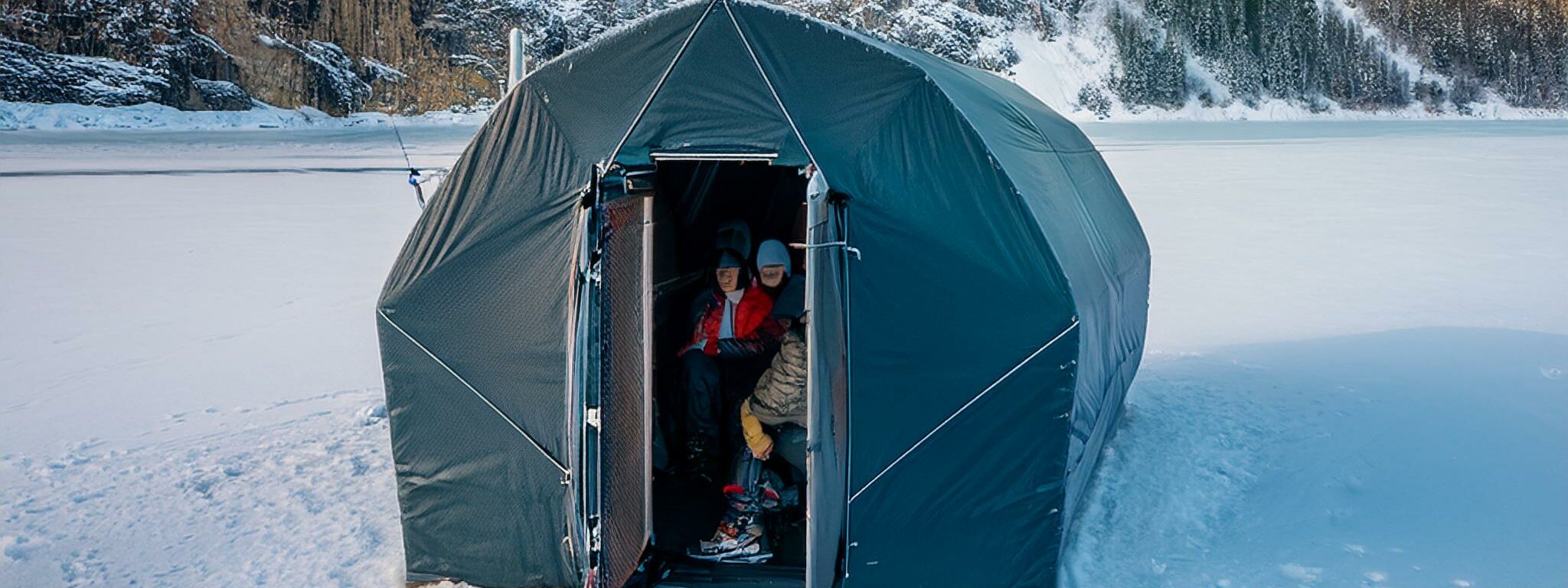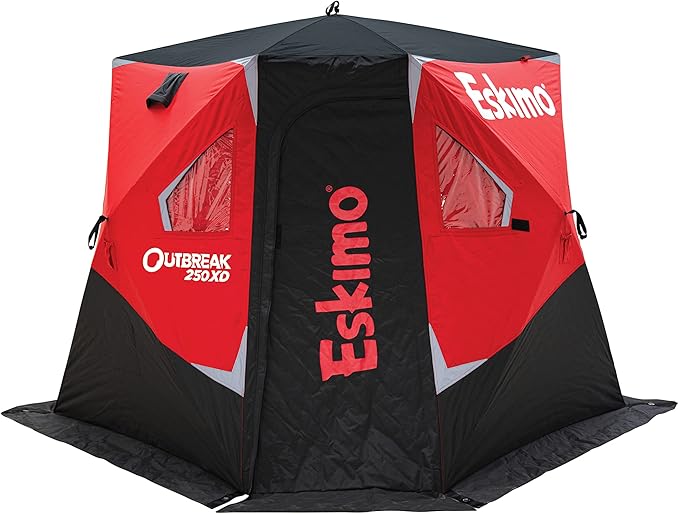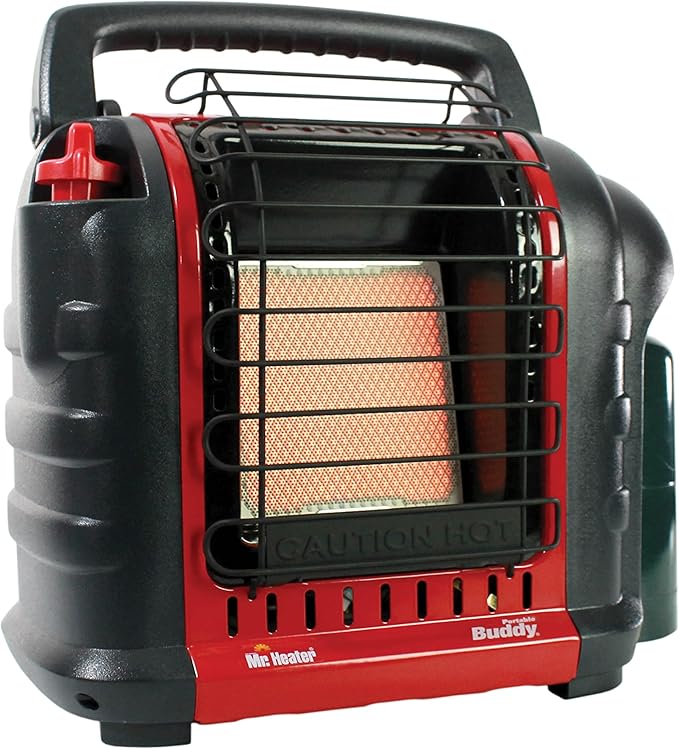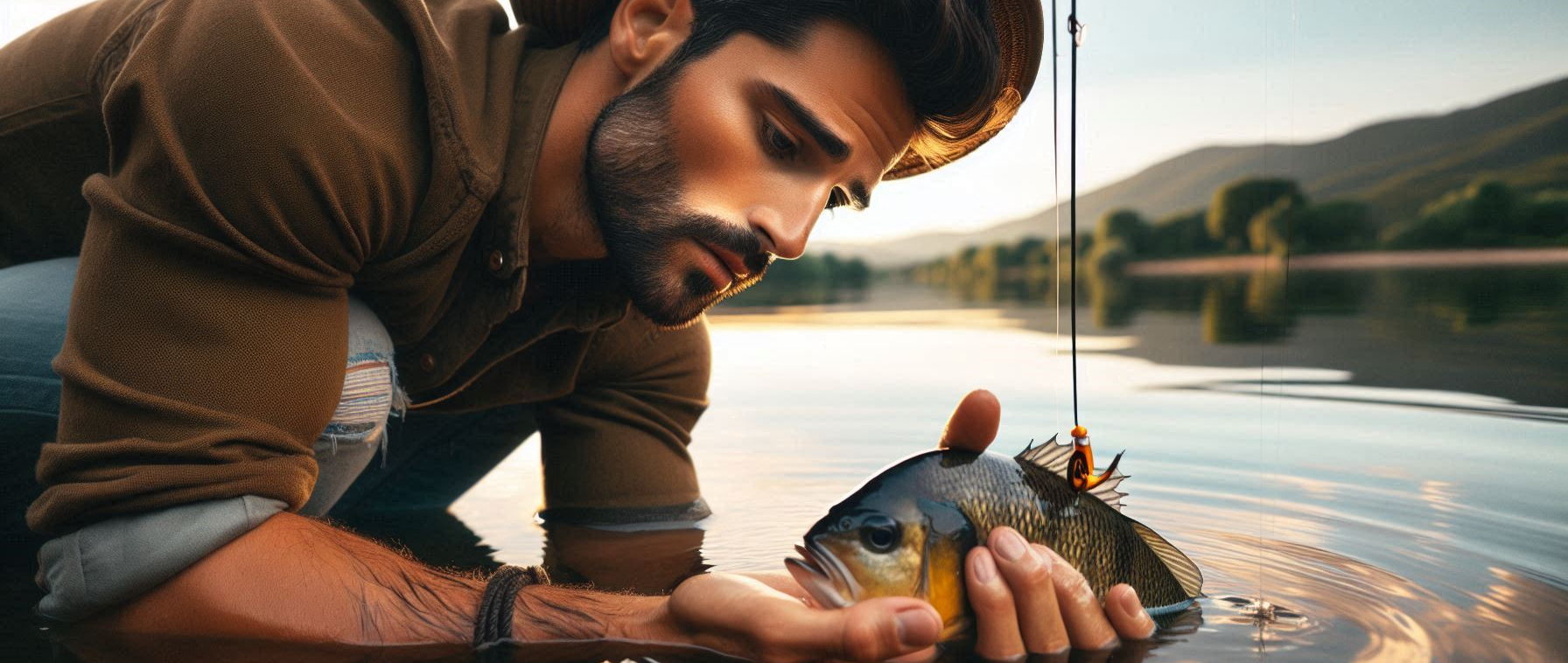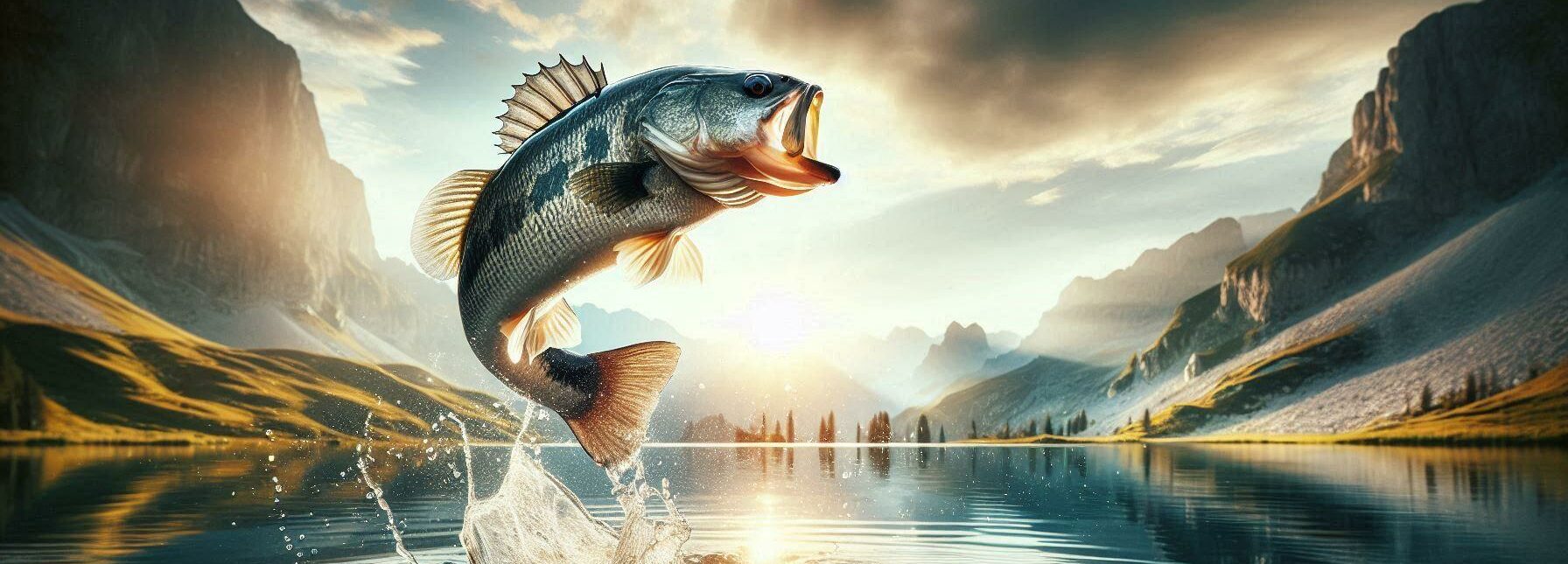Ice fishing huts, or shanties, are like little sanctuaries on a frozen lake. They provide a cozy space to enjoy the art of ice fishing without freezing your toes off. But there’s more to them than just comfort. These huts actually have a pretty cool history.
Back in the day, ice fishing huts were pretty basic. Early versions were knocked together from whatever materials were handy, often not much more than a lean-to. The idea was to create a simple structure to block the biting wind. Over the years, though, these huts have evolved into a wide range of designs and functionalities.
Today, ice fishing huts come in many shapes and sizes. You’ve got lightweight, portable ones that you can easily fold up and transport, as well as heavy-duty, insulated models that can withstand brutal winter storms. From pop-up tents to semi-permanent wooden
Now, let’s talk materials. The essentials often include durable fabric for those pop-up styles or sturdy wood and metal for more permanent structures. Insulation is a key factor, particularly if you plan to stay out for hours at a time. Materials like insulated fabric, thermal panels, and sometimes even carpeted floors can make a big difference in staying warm.
Beyond the materials and design, it’s crucial to think about the added features these huts offer. Modern ice fishing huts might include built-in seating, venting systems, and even little luxuries like windows and doors. A well-designed hut can turn a cold expedition into a cozy and enjoyable adventure.
Choosing the Right Ice Fishing Hut
Picking the right ice fishing hut can make or break your fishing experience, trust me. It’s all about knowing what you need and balancing that with what’s available. Here’s a breakdown of key factors to keep in mind.
Size really does matter here. Think about how many people will be using the hut regularly. A solo fisher might get by with a compact, portable design, while a family or group of friends will need more space. Make sure there’s enough room not only to fish but to move around comfortably.
Weight is another biggie. If you’re hauling it by hand or on a sled, lighter is better. Some of the more robust huts offer great protection and insulation but can be bulky and a hassle to transport. Balance your need for protection with how much effort you’re willing to put into setup and takedown.
Speaking of insulation, this is absolutely crucial. Inadequate insulation can make for a miserable day on the ice. Look for huts equipped with thermal fabric or additional lining. This stuff will help keep the heat in and the cold out, making your time on the ice a lot more bearable.
Portability can’t be overlooked either. Pop-up huts are fantastic for their ease of setup and transport. Many of them fold down compactly, making them ideal for those who prefer to move around a lot. More permanent or semi-permanent huts are great if you’ve got a favorite spot on the lake where you’ll be spending most of your time.
When it comes to popular brands and models, there are a few that consistently stand out. Companies like Eskimo, Clam, and Otter are well-regarded for their durable and user-friendly designs. It’s worth reading reviews and maybe even visiting a local outfitter to see what fits your personal needs.
Don’t forget the budget. Ice fishing huts can range from very affordable to quite pricey. Set a realistic budget that considers not just the initial purchase but also any additional gear or accessories you might need. Sometimes it’s worth spending a bit more for higher quality and better insulation.
Safety features are the finishing touch. Look for huts with good ventilation to prevent carbon monoxide buildup, sturdy construction to withstand winds, and reflective elements if you’ll be fishing in low-light conditions. Better safe than sorry on the ice.
Setting Up and Using Your Ice Fishing Hut
Getting your ice fishing hut set up and ready to go can be the difference between a frosty struggle and an awesome day catching fish. Here’s a straightforward guide to help you get the most out of your hut.
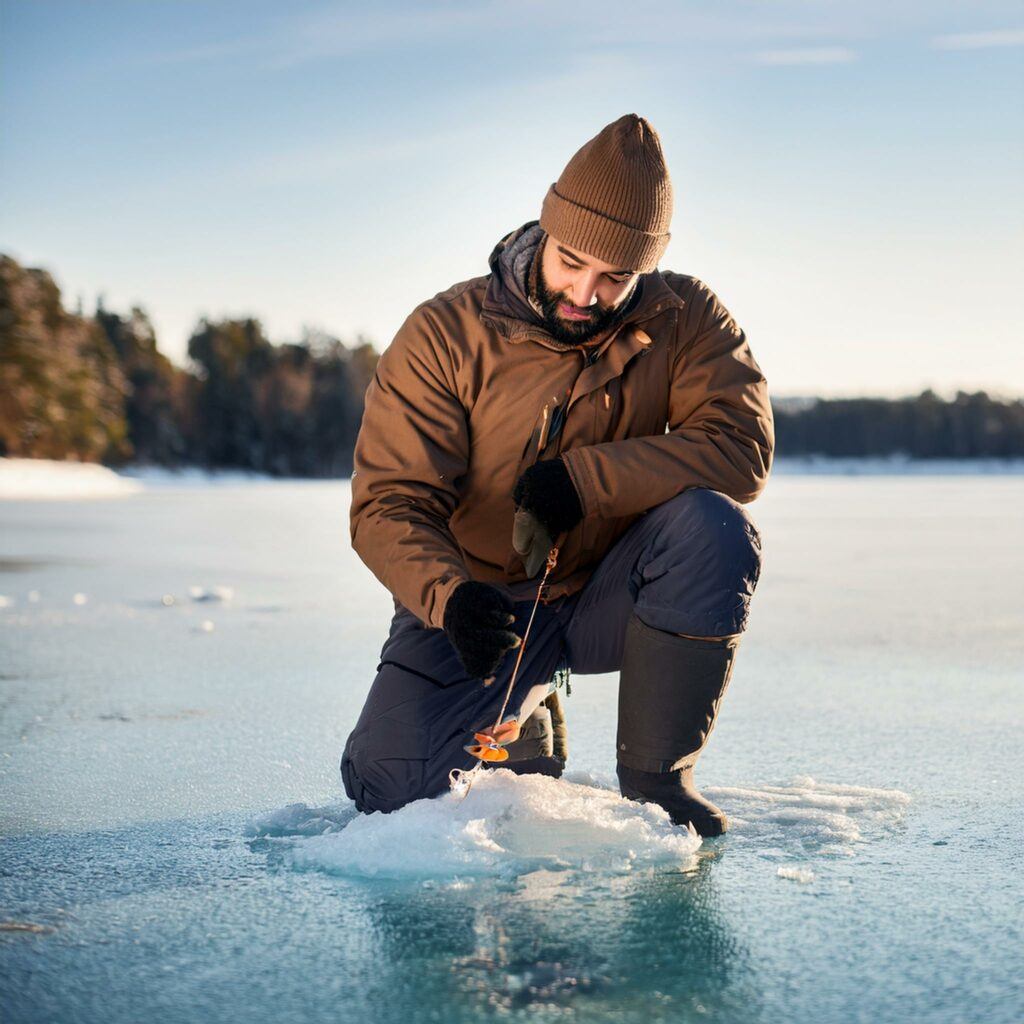
First thing, check out your spot. Make sure the ice is thick enough to support the weight of your hut and all the gear you bring along. Safety first, always!
After you’ve picked the perfect location, start by laying out your hut flat on the ice. For pop-up models, unfold them carefully following the instructions. For more permanent huts, it’ll usually involve a bit more assembly. Follow the manufacturer’s guidelines closely to avoid any hassles later.
Anchoring your hut is super important. Ice conditions can change, and a loose hut might take a little trip across the ice. Use ice anchors or screw-in stakes to secure the base and prevent any unwelcome sliding.
Now, on to the gear. Bringing the right essentials can make your experience much smoother. Make sure you’ve got a good ice auger for drilling fishing holes, a comfy chair or bucket to sit on, and a heating source like a portable propane heater. Always have extra layers of clothing, and don’t forget snacks and water!
Keeping warm is key out there. Insulating your hut with extra tarps or mats can help retain heat. Set up your heater but keep ventilation in mind to avoid carbon monoxide buildup. A little fan can circulate warm air and stop condensation from becoming an issue.
To keep safe on the ice, carry a safety kit. Include items like a first aid kit, ice picks for self-rescue, and a whistle. Unexpected things can happen, and being prepared is a lifesaver.
Remember to pack out what you pack in. Keep the ice as pristine as you found it. Trash, food wrappers, and extra line—bring it all back with you. Mother Nature will thank you, and you’ll help keep the environment beautiful for everyone.
Sustainable and Ethical Ice Fishing
Ice fishing enthusiasts have a responsibility to care for the environment and practice ethical fishing. Sustainable habits ensure that the thrill of ice fishing can be enjoyed for future generations.
When setting up your hut, consider its environmental impact. Use eco-friendly materials and methods where possible. Energy-efficient devices, like LED lights and solar panels for small electronic needs, help minimize the carbon footprint.
Be mindful of your waste. Pack reusable containers and minimize single-use plastics. All waste, including organic, should be taken off the ice and disposed of properly.
Fish populations can be sensitive. Stick to local fishing limits and season regulations to avoid overfishing. Using barbless hooks can reduce harm to fish that are caught and released. Familiarize yourself with the types of fish in your area and target species that are abundant and within legal limits.
Respect the local habitat. Avoid disturbing aquatic plants and other wildlife. Setting up your hut away from fragile areas can help preserve the natural beauty and health of the lake environment.
Engage with local conservation groups and initiatives. Participating in clean-up days and educational workshops can deepen your understanding of sustainable practices and strengthen community ties.
Stay informed about local regulations and any environmental advisories. Conditions on the ice can change, and staying updated ensures a safe and responsible fishing experience.
Ultimately, balancing the joy of ice fishing with sustainable and ethical behaviors protects the environment and ensures the longevity of the sport. By being conscientious and caring fishers, we can make a positive impact, keep the waters healthy, and enjoy our icy adventures for years to come.


